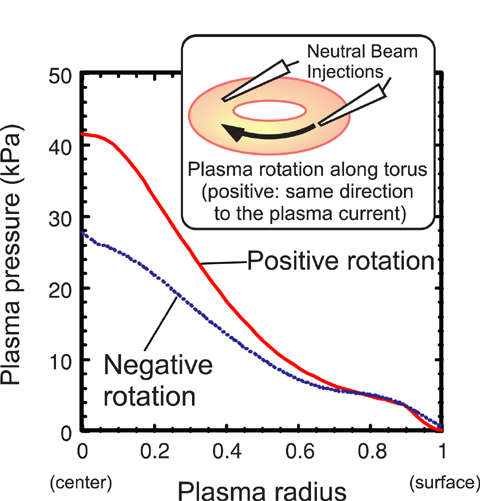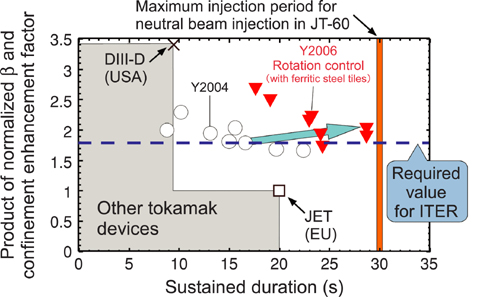
Fig.3-2 Comparison of plasma pressure profile with different plasma rotation

Fig.3-3 Plasma performance and sustained duration in long-pulse plasmas
One of the major objectives of ITER is to sustain burning plasmas with fusion gain (Q= fusion power output/auxiliary heating power input) larger than 10 for a long time (more than 400s). The fusion power is proportional to the square of the plasma pressure (temperature × density). To obtain such high Q plasmas, both A) High fusion power output, achieved by increasing the plasma pressure, and B) Reduced auxiliary heating power, achieved by improving the plasma confinement, must be satisfied simultaneously. "Normalized plasma pressure (βN )" is used as the index of plasma pressure and "confinement enhancement factor (HH )" is used as the index of the quality of the plasma confinement. The product of βN and HH , βN・HH , is widely used as a measure of Q, since Q is proportional to βN・HH ,
In order to establish long-pulse burning plasma operation in ITER, steady state plasma operation with high value of βN・HH , exceeding the value required for ITER, has been a main target of fusion plasma research. Making use of the good controllability of plasma rotation in JT-60, we found that the achievable βN and HH can be increased when the plasma rotation in the core becomes positive (Fig.3-2). In addition, the uniformity of toroidal magnetic field was improved by installing ferritic steel tiles inside the vacuum vessel. As a result of the reduction in the loss of fast ions from neutral beam injections for plasma heating, both the controllability of the plasma rotation and the efficiency of the neutral beam heating were improved successfully.
By optimization of the toroidal rotation profile and the edge plasma density so as to maintain high β and high confinement, steady-state operation of the high performance plasma has been established in JT-60 (Fig.3-3). In this study, high performance plasma with βN・HH of 2.0 was sustained for 28.6s, the world record. The achieved value of βN・HH is higher than that required for ITER standard operation of 1.8. The sustained duration is limited by the maximum injection period for the neutral beam heating system in JT-60. Since the pulse duration of the heating system for ITER is longer than the target regime (more than 400s), the long-pulse operation of burning plasmas for ITER seems to have been established.
<Previous: 3 Nuclear Fusion Research and Development | Next: 3-2 >